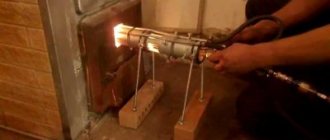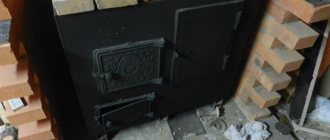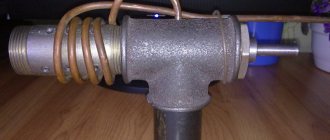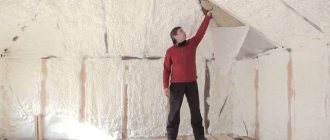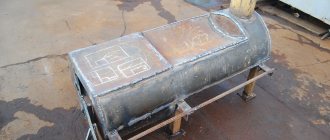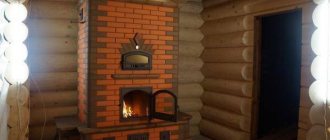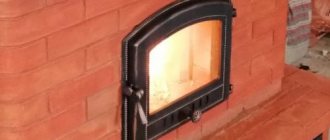The ecological type of fireplace, unlike gas and wood-burning equipment in this category, can be used in multi-storey buildings. To organize it, you do not need to obtain permission from the administration. There is no need to build a chimney or fuel storage facility. And if the hearth is decorated in an interesting way, the burner for the bio-fireplace is made with your own hands, the costs of arrangement will also be significantly reduced. Isn't it true?
You will find everything about how to make a spectacular eco-fireplace with a trouble-free fuel cell in the article we presented. Using the information provided and valuable advice, you can make your own stunning piece of furniture that will not create the slightest threat during the burning period.
Our article describes in detail the process of self-manufacturing three types of burners for installing biofireplaces. Interesting decoration options are presented, and recommendations are given for the safe use of spectacular homemade products. The presented material is supplemented with photo illustrations and video guidance.
Making biofireplaces with your own hands
How to make a bio-fireplace with your own hands? It’s easy just if your hands grow from the right place. For manufacturing we will need the following tools and materials:
- Glass. The pieces are available at glass cutting stations. You can take an old aquarium.
- Glass cutter.
- Silicone sealant (glue glass).
- Stainless steel mesh.
- Metal box.
- Small stones.
- Fuel for a biofireplace.
- Wick (piece of cord).
- Metal glass for fuel.
Variety #1 tabletop
First, figure out on paper how to make a bio-fireplace. Sketch out a simple drawing with dimensions. When designing a tabletop fireplace, keep in mind that the distance from the burner to the nearest glass should be 16 cm or more. If there are 2 or more burners, then the distance between the burners is also more than 16 cm. As a result, on paper we get a tabletop fireplace.
The manufacturing process will look like this:
As a basis, we took a metal box of a certain size (according to the drawing). We will adjust all other components to it.
Often fuel is sold in plastic containers. She doesn't suit us. Take an iron glass. We pour fuel into it.
We take an iron mesh. We cut it to the size of the metal box. It is better to take 2 layers of mesh. Place the stones on a grid over the entire area. Stones are not only a beautiful accessory for our heat generator. They perfectly accumulate and release thermal energy. They do this evenly over the entire covered area.
We take a regular cord. Cut a piece to the required length. We immerse the cord in a glass of fuel and light it. With the help of simple manipulations, the installation of a bio-fireplace was done quickly. Above we received the answer to the question “How to make a burner for a bio-fireplace with your own hands”?
Variety #2 wall-mounted
This type of heat units has a flat, elongated shape. This shape makes it easier to attach the structure to the wall. The front part of the device is covered with glass for safety reasons. The side walls of the device can also be made of glass. The back wall is made of non-combustible material. This is usually hardware decoded in various designs. Hanging such a fireplace is easy. Special fasteners are screwed to the wall, then the fireplace is secured. The device does not pose a fire hazard because the body and walls heat up slightly. Due to low heating, a person will not get burned by touching the body.
The manufacturing principle is the same as for a desktop device. You make a drawing, indicating dimensions and materials. Next, you make the product itself and hang it on the wall. Producing bio-fireplaces at home is a simple matter, not a troublesome one.
Variety #3 floor
We place this type on the floor, on its own legs. In fact, this is a tabletop fireplace, only on a larger scale. You can put it on the podium. The bottom will not get very hot. Based on this, the device can be placed on any straight, flat surface. The size and shape of different rooms vary. The big advantage of this device is its mobility.
Moving it to a new place is a matter of 1 minute. You can quickly heat any room by simply moving the unit to a new location. We see that it is easy and simple to make a bio-fireplace with your own hands.
Decorating the fuel device
The fireplace burner can be decorated with additional elements. This will not only improve the design, but will also help disguise the wick.
You can effectively decorate a biofireplace using various materials. In this picture, the decor is made using metal rods
Among the most popular decorations are:
- Ceramic logs , the size of which must match the dimensions of the hearth. Such elements will imitate a fire.
- Various types of natural and artificial stones , which can be the same or different sizes, transparent or colored, smooth or with a textured surface. Pebbles can be laid out not only on the grate, but also outside it.
- Stylized surrounding objects : poker, tongs, tools for lighting and extinguishing. Here you can also put fuel in decorative packaging.
Also good are decorative cladding made of heat-resistant ceramics, and clay and faience figurines that can be placed on the fireplace lid or next to it.
It is advisable to use removable decorative components, which will allow you to periodically change the appearance of the device.
DIY bio-fireplace burner
Burner options for biofireplaces
There are many types of schemes for the production of thermal blocks. We will offer you a couple of options.
The simplest model of a fuel cell
A simple DIY burner for a bio-fireplace will be made like this. We take a stainless steel container. The wall should be from 2 mm. The depth of the container is 5 cm. The dimensions are arbitrary, according to your drawings. Appearance is not important. This element is hidden from prying eyes. But it must be a good, strong element. Biofuel is poured into a tank or glass. Insert the wick. They are taken out through the mesh. A cord soaked in a flammable liquid ignites, emitting light and heat.
Two-chamber burner with perforations (slits)
This design option is usually made in the factory. It is fuel efficient. This occurs due to a decrease in the combustion area. Fuel consumption decreases.
We take a bath, a stainless steel box. The sizes are arbitrary. It is possible as in the previous version. We cut the plate along the length of the body (along the inside). The plate should be the same thickness as the body material. We calculate the width using the formula: SH = Vs - 1.5 + 2xRs (where Vs is the width inside the bath, and Rs is the depth of the bath). The plates bend at right angles from the long edges. This is done to get legs equal in depth to Rs. We ended up with an element that, along the length of the bathtub, is 1cm narrower than its width in profile, resembling the letter P.
On one of the legs of this letter P, we make cuts, like on a comb. We install a U-shaped structure so that the gap between the slots and the wall is 1.5 cm. We fill the tank with fuel. Let's light it up. The flame will only be located in a narrow strip of 1.5 cm. The fuel below will not ignite. Oxygen access is limited. No fuel shortage is expected. It will seep through the slits. To quickly put out the fire, make another plate to cover the fire.
To ensure that the fuel burns out completely, tilt the tank towards the working surface. This can be done by mixing fuel with gypsum. Next, tilt the resulting mixture in the direction of the workplace. The mixture hardens. We get excellent results. In this case, the leg of the U-structure needs to be shortened. This is necessary to make the structure completely horizontal. You can make a tank with a double bottom. The finished burner is placed in an additional, larger tank. The edges of the top tank will cover the tank elements below.
The simplest device with a filler
The container with the U-profile must be filled with filler. Usually this is mineral wool. Basalt fibers must be replaced with cotton wool with an acrylic component based on the following factors:
- Hygroscopicity. Absorbs moisture well.
- Fiber filler has better vapor permeability. Alcohol vapor will circulate inside the filler without any problems.
- Soft cotton wool burns long and evenly.
- During the production process of such cotton wool, various chemicals are not abused.
- If there are difficulties with the supply of acrylic wool, find a similar one, only softer. Soaked cotton wool will burn more slowly, increasing the overall burning time.
- We understand that a biofireplace can be assembled with your own hands without worries or hassle.
An even simpler design for you. An iron mug will do. You can pick up a jar. Place the absorbent in the container. There is no need to tamp. We impregnate the filler with fuel. We put an iron mesh and a lid with holes on top. Next we set it on fire.
Design options
Looking at photos of biofireplaces on the Internet, it seems that there are countless possibilities for its artistic design. However, if we approach the question in a utilitarian way: which burner should be made for which fireplace, then the number of types of technical design of a biofireplace is reduced to less than a dozen, but each of them has the same innumerable variety of decorative design options.
Biofireplace options
A bio-fireplace for an apartment or private residential building can technically be implemented as follows. way (see fig.):
- Tabletop mini, so-called. fireplace night light, pos. 1 in Fig., the burner is only round.
- Tabletop interior with a round (item 2 and 3) or linear burner (item 4).
- Floor-standing indoor (item 5) or outdoor (item 6); the burner is predominantly round.
- Wall-mounted with a linear (item 7) or round burner (item 8).
- Built into the decorative wall cladding, pos. 9, the burner is linear only.
- Wall-mounted false fireplace; possibly with an imitation of a wood firebox and chimney, pos. 10. The burner is also linear.
Note: round burner is a conditional name. In fact, it can be square (item 3), polygonal or complex in shape. The main difference between a round burner and a linear one is that the overall dimensions of the fire part of the first in plan differ by no more than 50%, which imposes certain restrictions on the possibilities of its technical implementation.
Step-by-step instructions for a DIY bio-fireplace
We assemble a biofuel fireplace using step-by-step manufacturing instructions. It's simple. Even a high school student can do it. Let's get started.
- We glue pre-prepared pieces of glass of the required sizes together. Silicone sealant works best for this purpose. For a day we forget about our product. It must dry thoroughly.
- The base of the structure is usually made with a rectangular or square base.
- We pour fuel from plastic containers into metal vessels (tin can, iron glass).
- Dip the wick from the cord into the burner.
- We put a metal mesh on top.
- Place stones on the mesh.
- The biofuel fireplace is ready to start.
Some tricks
A bio-fireplace will become truly safe and will delight the eye with its sparkle if, firstly, its burner is equipped with a damper to adjust the flame. Why - see above. Secondly, the alcohol flame is visually sluggish: bluish, almost colorless. This, of course, is good: the blue color of the almost transparent flame indicates complete combustion of the fuel. But it wouldn’t hurt to revive the flame of the bio-fireplace by brightening it up. For this purpose, 5-10% of rectified (not cracked!) 100-octane highly purified gasoline is added to branded biofuel for fireplaces; This is also how gasoline lighters are refilled. Natural 100-octane gasoline is oh so expensive, but that’s not all. Its viscosity and surface tension are much greater than those of alcohol and it travels through capillaries more slowly. Therefore, it is the gasoline additive that poisons burner fillers the most. Manufacturers are no worse off for this - they sell more replacement burners. It’s better for us to put a damper on the burner and tint the flame ourselves.
Damper
Many branded linear burners for bio-fireplaces, incl. leading manufacturers are equipped with a damper with one handle running in the grooves under the cover, on the left in Fig. below. Clearly an irrational design: it is impossible to move the hot damper by hand, and if the damper is pulled and, especially, pushed with a stalk (see below), it easily warps and jams.
Incorrect and correct (right) designs of burner dampers for biofireplaces
The damper on 2 handles suspended in the slots of the lid (in the center in the figure) can, in principle, be quickly moved by hand. But fuel vapors leak through the slots, which can ignite in the air. The correct design of the burner cover damper for a biofireplace is sliding in the grooves under the cover with 2 handles; This one easily moves back and forth with a stalk made of a steel bar (on the right in the figure).
How to paint a flame
The most effective and safe way for both the burner and people to color the flame of a bio-fireplace is to add chromatizer metal ions to it, which emit bright lines in the visible part of the spectrum. A completely insignificant admixture of chromatizers, difficult to detect by subtle chemical analysis and in no way perceptible by humans, is enough, and the flame will sparkle. For flame colorization to be effective with chromatizers, 4 conditions must be met:
- The ionization energy of the chromatizer metal and the excitation energy of its ions must be low so that the flame temperature is sufficient for this;
- The exposure time of the excited chromatizer ion should be as short as possible so that it, excited by the flame, immediately flares up;
- The chromatizer ion must glow in the red, orange and yellow regions of the spectrum so that the flame has a natural color;
- The admixture of chromatizer ions in the air, perceptible by our senses, should be harmless to humans, both with a single exposure and with long-term regular exposure.
Of those readily available, the above conditions are met by chromium and sodium ions. Chrome gives spectacular color shifts throughout the desired part of the spectrum; sodium - in yellow. A fairly easily released chromium impurity is always present in natural quartz and quartzite. It is enough to cover the mouth of the bio-fireplace burner with quartzite pebbles, and the flame will sparkle “like a real one”, pos. 1 in Fig. There is enough chromium in granite of any color, but besides it, this stone contains many not so harmless impurities, incl. radionuclides. Therefore, there is no need to color the bio-fireplace flame with granite, pos. 2.
Methods for coloring a biofireplace flame
Note: for the same reason, stones for backfilling a homemade tabletop bio-fireplace must be taken carefully. You should look for white or translucent solids with a glassy fracture, but red and yellow ones should be avoided at all costs. These probably contain very harmful cadmium and sulfur.
With tabletop and, especially, with mini-biofireplaces, the matter is more complicated. Their low-power burners either will not heat the stones enough for the chromium to be released into the flame, and it will remain “dead” alcohol (item 5), or, if a more powerful burner is installed, the fuel will boil and the fireplace will become dangerous. Branded bio-fireplace candles are either filled with a specially prepared filler containing water-soluble chromium compounds, pos. 3 (biofuel always contains water), or are equipped with a mesh divider made of chromium-nickel steel, pos. 4. The last option is not optimal: nickel in the air is of no use, chrome from the mesh quickly burns out, and the mesh itself burns out.
If the bio-fireplace burner is linear, then the alcohol flame with dancing tongues from it is quite impressive, pos. 5. You can color it even more by throwing literally a few grains of ordinary table salt into the fuel tank or block, pos. 7. Sodium is a very active chromatizer. Dip the tip of a knife into kitchen salt, shake it off and put it into the flame of a gas stove; it will immediately turn yellow.
Choosing fuel for biofireplaces
At first glance, choosing a fuel seems like an easy task. But that's not true. You assembled the fireplace once, forever. You will buy fuel regularly. This issue must be taken responsibly. Important point. The fuel must have the prefix “bio” in its description on the packaging. There are liquids made from wood chips, beets, and potatoes. Such a liquid does not form toxic combustion products after combustion. This device is completely safe for humans. The flame sways smoothly and beautifully.
This effect is completely absent with other types of fireplaces.
The necessary conditions
A burner drawing for a biofireplace of varying complexity can be easily found on the Internet. And it won’t be difficult to draw it yourself either. However, before you start working, you need to understand that there are some requirements for the device that must be met in order for the craft to turn out not only beautiful and stylish, but also safe.
- You shouldn't save money by using cheap material - this is not an option. Fire is a very insidious element, capable of getting out of control even with the slightest inaccuracy.
- The ideal, and practically the only solution would be to use a thick-walled sheet of stainless steel, from which to cut out the necessary parts, and then hermetically connect them.
- Do not rush and wait the required time for the fastening components to harden or dry.
- After completion of work and before first use, carefully check for any unevenness, scratches or chips.
Rules for the safe operation of a biofireplace
- Rules for the safe operation of a biofireplace
- Do not leave open fire unattended.
- Only adults should light the fireplace. Children are not allowed.
- You cannot place the fireplace near a fan or in a draft.
- The fireplace must not be moved while it is burning. Relocation is possible after the fire is completely extinguished.
- It is prohibited to install a fireplace where flammable substances are stored. Gasolines, varnishes, paints, other liquids.
- Fill the container with fuel only through a funnel.
- It is prohibited to place any objects on the device body.
- It is prohibited to burn any type of fuel other than the specifically designated type.
- You cannot make changes to the design of the system without understanding what and how to do it.
- It is strictly forbidden to add fuel during combustion. A fire will happen instantly.
- Do not smoke while refueling.
- Spilled fuel must be wiped up. Otherwise, a fire may occur.
- Do not lean over the fireplace. Do not keep your hands near the fire.
- Do not cover the structure with anything. This will cause a fire.
- You need to extinguish the fireplace flame with a special metal plate.
- To refuel again, you need to wait 15 minutes after extinguishing the fire. The device must cool down.
- It is forbidden to remove the tank while the fire is burning.
- It is prohibited to use ordinary matches and lighters. You need to use special accessories for these purposes.
- If the fuel does not burn, it is at a low temperature. Let it warm up to room temperature.
- Nothing should be located closer than 1 meter from the fireplace.
- As you can see, the construction of a biofireplace is a simple device. Operating instructions are also easy to follow.
Portal and design
Judging by the requests on the RuNet, readers are most interested in biofireplaces with a portal “like the real thing.” Their firebox is decorated with ceramic firewood, which is widely sold on Ali Express and similar sites. The difficulty in this case is to maintain the minimum permissible distance from the upper end of the flame to the arch of the firebox (80 cm); this does not always suit the aesthetics and ergonomics of the room.
How to properly make a portal for a stationary bio-fireplace is shown in Fig. What is obvious is that non-combustible materials are used: metal profiles, drywall (gypsum plasterboard). What is not entirely obvious is that the firebox is painted inside with non-flammable paint, for example. acrylic with mineral pigment. It is advisable to paint the vault with heat-resistant (from 400 degrees) enamel.
How to make a bio-fireplace portal from plasterboard
And what is not at all obvious is mineral wool (preferably basalt), on the left in the figure, in the cavities of the frame surrounding the firebox. As for insulation, there is no special need for it, the bio-fireplace hardly heats anyway. But it is highly advisable to saturate the filler of the cavities of the bio-fireplace frame with a fire retardant in advance.
Borax, widely used in wooden construction, is ideal as a fire retardant - when heated above a certain limit, it releases a large volume of crystallization water vapor, and is harmless to people; unless, of course, you eat it with spoons. Suddenly the flame overheats the firebox, the fire retardant will muffle it or completely extinguish it. The borax solution for impregnation is prepared at a rate of approx. 1 glass per 5 liters of water. Lumber is impregnated with a weaker solution, but its impregnation is designed to resist fire once, and the firebox of a homemade bio-fireplace can overheat more than once.
Tabletop biofireplaces are no less popular. Manuals for their manufacture have been repeatedly published in RuNet; Just in case, we are giving a mini master class in drawings.
homemade tabletop biofireplace
A homemade tabletop bio-fireplace (item 1) consists of a body (any vessel suitable in size and design), a round wick burner with a soft wick and a flame cut-off grille. Stones are placed on the grate, firstly, to stabilize the flame and make it less likely to penetrate the evaporator; secondly, coloring the flame, see below. Since a weak flame fluctuates easily and can be knocked down by a breath of air, a tabletop biofireplace is almost always complemented by a glass shell (open casing), glued with silicone and placed on the body. Such a bio-fireplace is refueled with a measured portion of fuel through the grate using a funnel with a narrow spout; is set on fire (started) by a splinter.
Varieties
With all the apparent diversity of biofireplaces, they differ, by and large, only in appearance. Inside, they are arranged according to almost the same principle. Still, the burner for biofireplaces can be of two types.
- First: a regular container, which can be used to fit a simple tin can. The unpresentable appearance can then be decorated. There is practically no financial cost required, but this option has its own some inconveniences. The flame will be uncontrollable. In the sense that it can be extinguished only by covering it with something on top, which will lead to the appearance of a sharp unpleasant odor, and it is generally impossible to reduce or increase it. The only way to avoid the smell is to wait until the fuel burns completely.
- The second burner option is a fuel tank equipped with a special damper. You will have to spend a lot, but there will be no smells or problems with adjusting the flame. You can make such a burner yourself only if you have high-precision tools and high-quality materials.
Considering all of the above, it is better to sit down, think carefully and try to put together the first and second options, depending on your capabilities. The scheme should not be too complicated, but should take into account all safety measures.
Assembly
Here we will talk about creating the simplest version of a biofireplace, where the burner is hidden between two transparent protective screens. Such a device would look ideal on a coffee table or on a separate low and long cabinet.
It is not difficult to make a platform for a fireplace from ordinary plasterboard or 12 mm plywood. You should also stock up on:
- wooden block (50 by 30 millimeters);
- wood screws.
You will also need:
- two pieces of fire-resistant glass according to the dimensions you have chosen (order it from a workshop and ask them to sand the edges);
- fuel tank with valve;
- fasteners for screens (sold in furniture stores);
- bolts with washers and silicone seals;
- fireproof paint.
IN
A hole is made on top with a jigsaw for the purchased burner. All surfaces and edges are very carefully sanded. The places where the screws were screwed in are masked with wood putty. The base is painted with a fire-resistant composition black or dark brown.
At the last stage, install the burner and create a decorative coating of pebbles.
This video will help you better understand the process of creating a biofireplace:


